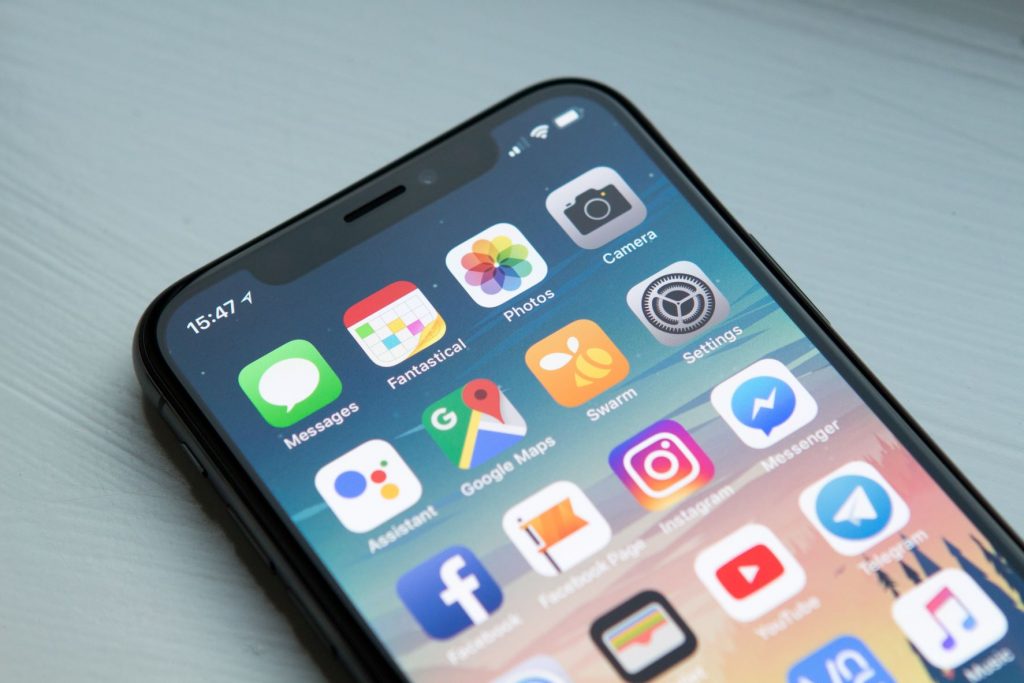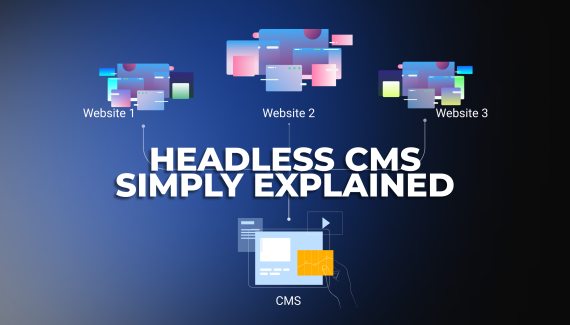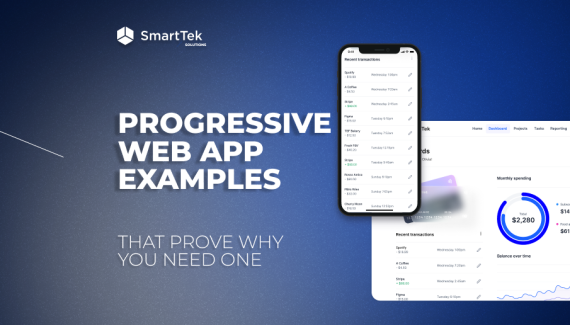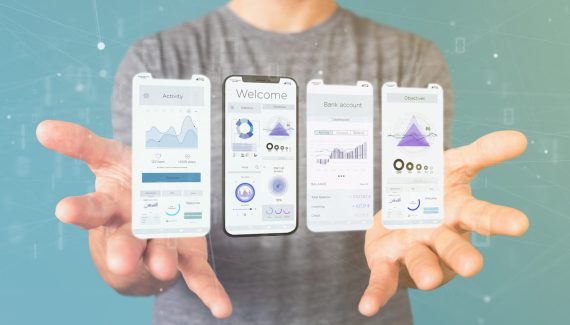It’s Android vs. iOS in a match to discover the best pick for developing an application. Get comfortable, and let’s dig into the differences between most used platforms.
Market Share
We are witnessing the Android vs. iOS race for market share. Mutually, Google’s Android and Apple’s iOS possess over 99 percent of the global market share. As of September 2021, Android has maintained its position as the leading mobile operating system worldwide, controlling the mobile OS market with a close to 73 percent share. iOS, in its turn, possesses a 27% market share.
You may be willing to rely on market share by regions, here are the statistics:
- US – 52.59% – iOS, 46.98% – Android;
- Europe – 22.23% – iOS, 72.71% – Android;
- Asia – 13.85% – iOS, 83.09% – Android;
As you can tell without any calculations, choosing Android is the best option if a mobile application aims at a worldwide audience.
Brief Guide on Native Apps
All mobile applications can be divided into two groups: native and cross-platform.
Native mobile apps are built for a specific platform and are coded in relevant programming languages for particular mobile operating systems, such as iOS or Android. They are expected to provide fast performance and a high degree of reliability.
Native apps are compatible with all existing gadgets: desktops, smart TVs, etc., although the most common and target device in which the developers develop a native mobile app is the smartphone.
What are the benefits of native mobile app development?
- Better performance. Native mobile apps directly interact with native APIs without depending on middleware. As a result, native mobile apps are faster and more responsive than cross-platform apps, which is crucial for performance-centric apps like games and graphic-heavy applications.
- Consistent look. Being developed with the use of software development kits, the UIs look relevant to their platform, which ensures a better UX.
- Native apps have immediate access to new features compared to hybrid apps that have to wait until there’s a plugin that supports the new feature.
Looking for a mobile app development team?
We’re up for any challenge. Contact us for a free consultation call.
Get in touchDifferences Between iOS and Android Platforms
Design
Although both iOS and Android are designed for mobile app development and share the founding principles of software design, their design philosophies differ in navigation and architecture organization.
Android apps are developed using partitions which means the app is broken down into fragments and screens. iOS application architecture relies on view controllers (page view, tab, split view, etc.) controlling the entire screen or its parts. The iOS architecture is more reliable in terms of errors. By system design, an iOS app is easier to develop. On the other hand, the new language Kotlin used to create Android apps is much simpler than the iOS language. With the introduction of Kotlin, developing Android apps has become much easier and faster.
When designing User Interfaces, designers can follow guidelines that outline the general principles and determine the overall feel of apps. Google’s Material Design Guidelines for Android indicate table sizes, icon spacing, color palette recommendations, and so on. The Human Interface Guidelines created by Apple for iOS offer recommendations for achieving intuitive design instead of specifying details.
To put it shortly, we enlist the main differences between Google and Apple’s design guidelines below.
- Depth. Apple embraces infinite depth in their applications, whereas Google advocates the flat design movement.
- Animation. Apple perceives animation from the functional point of view: they are used where necessary and do not attract much attention. On the contrary, Google aims to better the UX and bring the design to life with lights and vibrations when creating animation.
- Navigation. Google’s Material Design is rather laid-back as it has fewer navigation restrictions. Hence, designers are freer to create, yet this may lead to less user-friendly UI. Apple limits navigation options, resulting in comfortable and intuitive designs.
- Typography. Roboto is the choice for Android design, and San Francisco is the system font for iOS. Although basic text sizes are very similar on both platforms, Android uses more space between texts to build a hierarchy, and iOS texts are bold.
- Clarity. Despite iOS and Android reaching for simplicity to achieve optimal results, both platforms reproduce real-life but in different ways. Apple embraces an inclined and blurred design, while Google favors dropping shadows.

App Development Cost
Although Apple possesses fewer applications and its audience is noticeably smaller, the App Store generates more income. Hence, iOS applications get more cash flow. iOS is rather regularised as it is created for standard devices. In comparison, Android development is more expensive because the testing period for Android applications is longer. The open-source platform works negatively in the cost factor because the lack of regulation leads to more complications and rework.
Programming Languages
Native apps are coded in a language used for the particular device and its OS. iOS is easy to produce apps as it demands the expertise of either Objective-C or Swift. In turn, Android-native apps require some initial knowledge of Java or Kotlin.
Most mobile app developers agree that an iOS app is more accessible to create in comparison to Android one. It takes less time to code in Swift than in Java due to high readability. However, it might change in the near future as Kotlin develops further. The language is expected to replace Java soon as it is more intuitive, modern, and easy to read. Programming languages used for iOS development are easier to master because of a shorter learning curve.
Development Environment
The integrated environment is another significant difference between the ways iOS and Android are developed. Android Studio, used by Android developers, is a proprietary tool introduced by Google in 2013. This integrated development environment possesses a wide range of development and debugging features, has cross-platform support and high readability. On the contrary, iOS developers utilize the proprietary XCode tool by Apple, which provides a variety of bug fixing tools, supports the entire range of iOS devices, and is easy to get around.
If you ask, which integrated development environment (IDE) is better, there is no single answer: both have advantages and disadvantages. For instance, Android Studio is great for quickly generating multiple app versions for various devices, while Xcode offers good source and assistant editors.
Also, keep in mind that there is little chance of finding developers specializing in Android and iOS development separately. Hence, once the platform is decided, most developers don’t need to compare the integrated environments. Summing up: the choice of the platform should not depend on the differences between Xcode and Android Studio.

Timeline
The time allotted for the project is a common question and must be preferentially considered when deciding which platform to exploit. Usually, it takes 3 to 4 months to develop an app ready for public release successfully. Producing for Android is typically more time-consuming in comparison to iOS, the reason being longer release cycles. Correspondingly, the costs increase both in development and quality assurance.
Compatibility
iOS has a significant advantage over Android in terms of compatibility with other devices. Android devices sometimes are not compliant with each other, resulting in a necessity to create separate versions of the app to be compatible with different devices. iOS has gone further as all Apple devices are compatible with each other. Thus, compatibility issues are not likely to appear when producing an app.
Making Money from the App
Consequently, having an app revenue strategy figured out before the development stage begins is critical. Continue reading to find out the financial arguments of choice between iOS or Android development.
- The App Store earns from application purchases while, on the contrary, Google Play users tend not to buy their applications. At the same time, the ratio of in-app purchases is meager, especially when compared to iOS apps.
- Advertisement is what generates revenue for Android. Meanwhile, it is somewhat unlikely to see much advertisement in iPhone applications.
- iOS users are very responsive in acquiring new apps or purchases related to removing ads, providing excellent returns on investment to the mobile app developers. Apple makes double the revenue as Google play store despite having half the downloads.
- Instead of considering iOS vs. Android, hybrid app development is another source of making good money as it helps develop an app at a faster pace with less investment.
Want to start a project?
Grow your team and expand your software development capabilities with a reliable tech partner by your side.
Contact usWhat Is the Way to Dominate Both Platforms?
Native app design is centered around interaction design. To succeed, you should have a clear understanding of your users and their pain points, as well as solutions your app can provide. The proper user flow and user journey map have to be designed with a thorough vision of what task a user is willing to accomplish. At the same time, hybrid app design is focused on information architecture inside the app. Proper design ensures users can navigate the app and reach whatever they need quickly and without much effort.
Thus, native apps have long been favored over hybrid apps due to their ability to leverage everything an operating system offers its users fully. But advances in cross-platform mobile app development have made these versatile apps far more competitive. You should take into consideration that cross-platform development is not a solution for every app. There are many cases when it’s better to stick to native development. However, it’s always worth considering cross-platform development, as it significantly decreases the project’s cost and timeline.
Pros of cross-platform apps:
- Faster development
- Lower costs
- Wider audience
- Consistency between platforms
- Reusable code
Cons of cross-platform mobile apps development:
- Lower performance
- Harder code design
- Long wait time for new features
Summing Up
When hesitating between iOS or Android development, take into consideration the following factors:
- Time for mobile app development
- Development cost
- Experts who form the team
- Available resources and features
- Risks that may appear during the development process
With iOS generating more income and Android possessing most of the market share, it must be complicated to decide which platform to choose for mobile app development. Eventually, your choice to work, iOS vs. Android, in the beginning, is going to come down to what works for your business. Base your choice on the app’s features you want to create, focusing on the app’s unique needs and the solutions offered by each platform.
A mobile app can boost your business, helping you achieve strategic plans. With Smart Tek, you just need to come up with an idea and major functionalities that you would like to keep. We are here to direct you towards a competent solution.






 view the post
view the post
 view the post
view the post
 view the post
view the post

